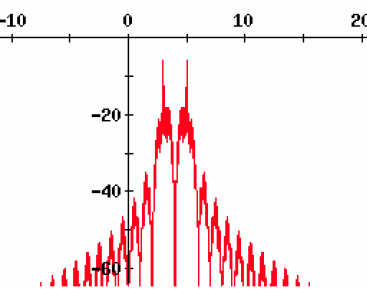The SDR is showing a lot about the problem, but could you tweak the scan to show more please?
In brief, the emonTX is sending packets fine, centered around 434.00x MHz as expected. There are replayable captures at 00:21*, 00:26, 00:36, 1:16 plus 5 packets still shown in the history (* does not fit the 10 second spacing of the others).
Why are packets not seen every 10 seconds? Remember the duration of a packet at a fraction of a second is commensurate with the SDR left to right scan time. With a wide scan setting, packet events are easily missed.
If you freeze frame on say the 1:16 event, you can see the typical high modulation index FSK pattern with two peaks centred around the nominal carrier frequency of 434.0 MHz. The modulation information is mostly in those peaks (and curiously there is little at the carrier frequency). At decode time, one peak corresponds to the 1’s and the other to the 0’s
Now here is the problem - the narrow band interferer is dumping energy into the “left-hand” peak. This will skew the decode towards that value, flipping bits. Best case, the packet length value is not corrupted and the packet reception will terminate normally with a bad CRC - then rejected at a higher level.
Tweaking thresholds and gains can’t solve this, that will only adjust the vertical scale of your picture. Either the interferer needs to be removed from the reception passband or move the passband elsewhere.
Can you rerun the monitoring with a reduced scan width? 433.750 - 434.250 MHz will easily capture the packet activity and should confirm the 10 second heartbeat (and perhaps shed some light on the 00:21 anomaly).
Then narrow the scan even further to concentrate on just the 433.9xx activity. So far it is showing almost no modulation spread. It may be a slow OOK signal - its signature may offer some clues to its origin (e.g. weatherstation).
At least as far as the current scan shows, the interferer seems to be continuous - this breaks the ISM rules which insist on maximum duty cycles exactly to allow a primitive time sharing of the bandwidth.
One quick cross check is to run the SDR without an antenna, all signals should flatline to the noise floor. Then connecting a more directional antenna (e.g. a simple loop) you can null out the interferer to give a rough bearing and potentially triangulate the offender.

